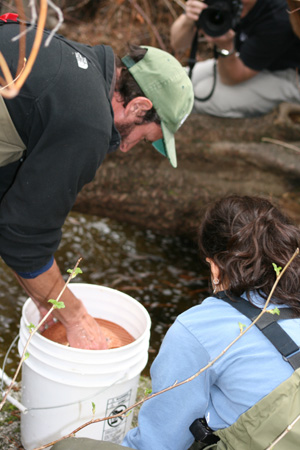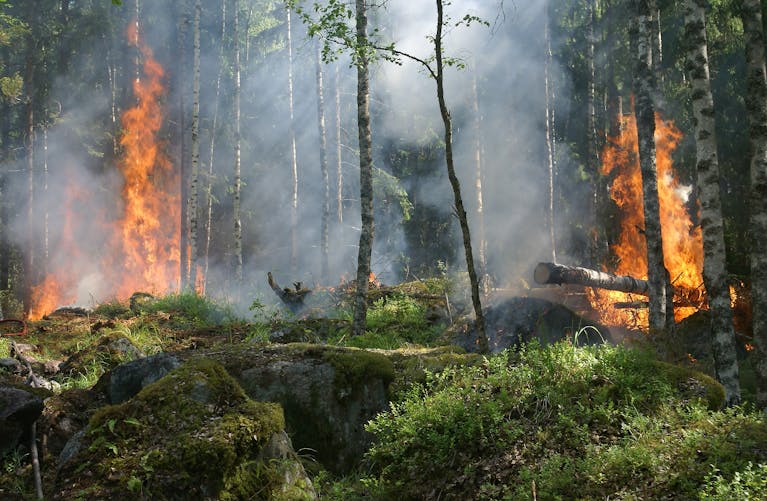The California Department of Forestry and Fire Protection (Cal Fire) and the Office of Emergency Services (OES) are evaluating a new type of grant to mitigate wildfire damage and destruction to individual homes. Grants for low- and moderate-income homeowners to protect their homes in the case of an approaching or in the midst of a wildfire are being tested in San Diego and Shasta counties.
While both agencies have previously granted funds to local agencies and fire safe councils for wildfire protection projects within their purview, these grants will be specifically targeted to the protection, meaning hardening, of individual homes.
The idea was embedded in Assembly Bill 38, which Assemblymember Jim Wood (D-Santa Rosa) proposed in December 2018 and was enacted in October 2019.
“To make a fire retrofit program effective we must get homeowners to work together to retrofit groups of homes collectively,” said Wood in a press release at the bill’s signing. “If just one homeowner on the block hardens their home but the rest of the houses do not, those unprotected houses can provide more than enough fuel to burn down an entire neighborhood.”
The bill’s purpose is to encourage cost-effective structure hardening and retrofitting that creates fire-resistant homes, businesses and public buildings. AB 38 directs the state fire marshal, in consultation with Cal Fire and the director of Housing and Community Development, to identify cost-effective building retrofits and structure hardening measures eligible for financial assistance under the wildfire mitigation program that provide for appropriate site or structure fire risk reduction.
“Establishing statewide standards are critical because wildfires do not respect jurisdictional boundaries or property lines,” Wood emphasized.
Currently, the pilot projects are being conducted in the communities of Dulzura in San Diego County and Whitmore in Shasta County. These are low- and medium-income areas (which are limited to fewer than 80% of the area’s median income) in the midst of high fire-hazard zones.
Several reasons were given for why these communities were selected, according to Jim McDougald, assistant chief of Cal Fire’s Community Wildfire Preparedness and Mitigation program. While they have experienced wildfires, the origins of the fires, the vegetation types and density of the homes are different in both communities.
OES and Cal Fire performed a county-level analysis that assessed social vulnerability and wildfire hazard data, explained Information Officer Alyson Hanner, Cal OES Office of Media Relations and Public Information.
“This led us to the counties with the highest social vulnerability and wildfire risk metrics. From there, we approached the top counties to discuss neighborhoods within their jurisdictions that would fit additional criteria, which included variation in the implementing entity (city, county, NGO [non-governmental organization]), housing and neighborhood density, home type, surrounding vegetation/terrain type, [and others],” Hanner added. “The goal was to select high risk and socially vulnerable communities that vary in these additional criteria in order to pilot and refine the state’s home hardening framework in different situations that we might encounter as the program is scaled up next year.”
The demonstration projects will help identify hardening strategies and cost-effective means of implementing them. The structural improvements will be codified in the state’s Building Code.
McDougald estimated that the program may be expanded to other localities next year and more certainly in 2024. When it is statewide, the fully funded initiative should have more than $100 million available for grants to harden homes in fire-prone areas.
Local agencies and fire safe councils will apply for funding, but the money will go directly to the local homeowners.
Cal Fire and OES have a separate grant program for wildfire protection focusing on defensive space and vegetation management. About $125 million is available now from this program.
In a separate press release, Cal Fire announced two other statewide grant programs for which the Legislature has appropriated $120 million for each.
The Fire Prevention Grants Program make awards for local projects in and near fire-threatened communities that focus on increasing the protection of people, structures and communities, such as hazardous fuels reduction, wildfire prevention planning and wildfire prevention education.
The Forest Health Grant Program funds will be for landscape-level forest restoration projects that increase forest resilience to catastrophic disturbance, such as forest fuels reduction, fire reintroduction, reforestation and using forest biomass.
Separately, OES announced Prepare California grants. This is a $100 million grant program for the most susceptible communities to natural disasters (not just wildfires), socially vulnerable and at the highest risk for future hazard events. The grants will be used to reduce the long-term risks of disasters such as flooding, earthquakes, wildfires, landslides, extreme heat, drought or dam failure by investing in infrastructure improvements designed to protect communities.







